Sustainability in the sanitary industry Our contribution
As a globally active group specializing in sanitary technology, Geberit aims to play a leading role in the transformation towards a sustainable sanitary industry. Our innovative, high-quality, and durable sanitary products have a positive impact on the industry, society, and environment.
For more than 30 years, we have been consistently pursuing our strategy in line with sustainability considerations along the entire product life cycle. This commitment is an important reason for the company's long-term success. We believe that the greatest contribution we can make to a circular economy is to keep setting new standards for product quality and durability.
Geberit products are typically used for decades. In addition, the long-term availability of spare parts and the backwards compatibility of new products make an important contribution to their service life. This makes it easier for construction partners to fulfil the often extensive catalogue of requirements for certified construction projects.
A binding sustainability strategy
More than 30 years ago, Geberit drew up its first environmental strategy and implemented specific measures. Over the years, this strategy was gradually expanded into a comprehensive sustainability strategy. It is based on the UN Agenda 2030 and its 17 Sustainable Development Goals.
Geberit's focus is on goals 6, “Clean Water and Sanitation“, and 11, “Sustainable Cities and Communities“, in particular. In addition, significant contributions are made to “Decent Work and Economic Growth“ (goal no. 8) and “Industry, Innovation and Infrastructure“ (goal no. 9).
At a glance
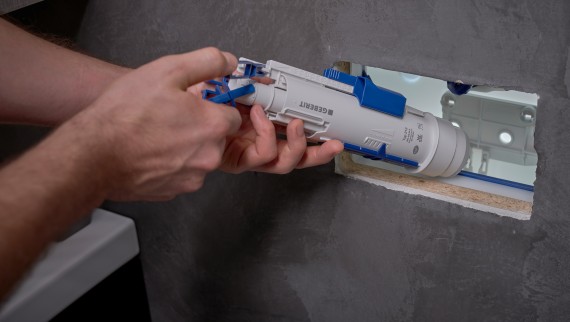
Designed for durability and quality
Geberit products have service lives that span decades because of the high-quality materials used and strict quality standards applied. Furthermore, they are usually backward-compatible and are easy to clean and maintain. Geberit spare parts are avaible for up to 50 years for all replaceable mechanical parts of the concealed tank and flush actuator plate. Only some specific functions of electronic products (for example our hygiene flush unit) are excluded.

Water-saving solutions
Geberit has a long tradition of manufacturing products that save water, especially toilet tanks. According to a model calculation, water consumption for toilet flushing has decreased since 1952 by around 80% from 18.5 gallons (70 liters) to 3.7 gallons (14 liters) per person per day thanks to several innovations such as Geberit dual-flush tanks. Every Geberit tank sold significantly reduces water consumption in homes and other buildings.

Creating added value with ecodesign
We have consistently been developing all our products according to the Ecodesign principle since 2007. This means that every new product should represent an ecological improvement compared to the previous model – without sacrificing quality, functionality, or durability. All stages of the product life cycle are taken into consideration for this assessment, from raw material extraction to disposal. Some 180 products have been developed or optimised according to this principle since it was introduced.

Conscientious use of resources
In production, we aim to close internal material cycles, minimizing waste and recycling it in a sensible way. Plastic is used as efficiently and sparingly as possible to manufacture high-quality and durable products. For example, almost 100% of our plastic waste is recycled and reused internally. Geberit also makes every effort to minimize its use of packaging material. The company mainly uses cardboard and avoids expanded polystyrene and other plastics as far as possible.

Reducing CO₂ emissions
Geberit consistently reduces our energy consumption and CO₂ emissions, the latter having decreased by 56% in proportion to currency-adjusted net sales since 2015. Our CO₂ emission reduction strategy builds on this success. The goal is to reduce CO₂ intensity (CO₂ emissions in proportion to currency-adjusted net sales) by 5% annually. Geberit also uses electricity from renewable energy sources. In 2022, more than 70% of the electricity we used came from renewable energy sources and certified ecological production.

Sustainability in the top 5%
The Geberit Group received a gold award from the EcoVadis platform for its sustainability management. This puts Geberit in the top 5% of all companies listed by EcoVadis across all industries and countries. The award makes it clear to customers and suppliers that Geberit has a comprehensive, systematic and long-term sustainability management system.
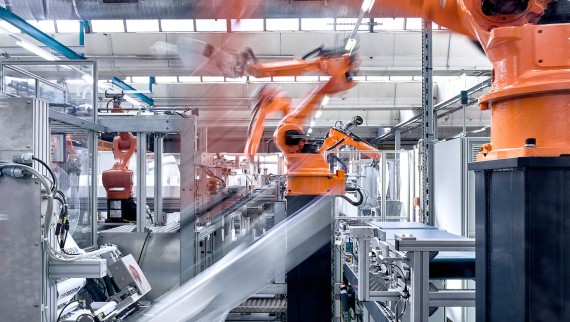
Certified production sites and logistics
In production and logistics, Geberit focuses on resource efficiency, occupational safety, and innovative thinking. The company is continuously developing its production processes and reducing its use of resources, its consumption of energy, and its waste. With the exception of one new site, all production sites, the logistics center, and the management company are certified according to ISO standards 9001 for quality, 14001 for the environment and 45001 for occupational health and safety. Selected sales companies, including Geberit North America, are also certified according to ISO 9001. In addition, some plants are striving for the ISO standard 50001 for energy management.
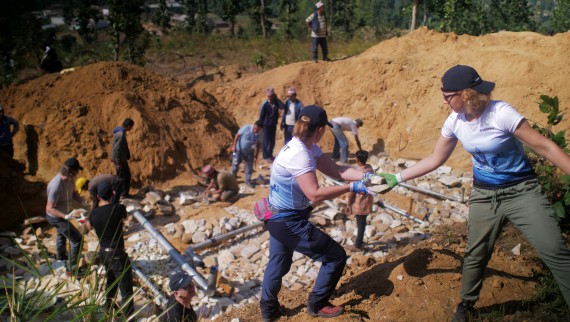
Social commitment
Training is an important pillar of our work to improve sanitation in developing regions. We work together with training organizations around the world to develop local knowledge on sanitation. We also cooperate with selected aid organizations to sustainably improve sanitary conditions and quality of life in developing countries. For example, in 2022, 15 Geberit employees travelled to Nepal to volunteer, and under the guidance of experts, they laid pipes for the water supply, secured wells, and built water tanks for the local village community.
Environmental Product Declarations (EPD)
Environmental Product Declarations, or EPDs, are an important source of information for building owners, investors, business partners, and other decision-makers. They provide information on the ecological footprint of construction products and are based on a detailed life cycle assessment.
Products with third-party EPDs account for 34% of Geberit Group sales. We therefore offer a wide range of products for buildings constructed in accordance with certification systems such as Minergie, DGNB, BREEAM, or LEED.
Downloads
EPD: Geberit Duofix element for wall-hung WC (840 KB)
EPD: Geberit Sigma flush actuator plates (372 KB)
Durable products that save resources
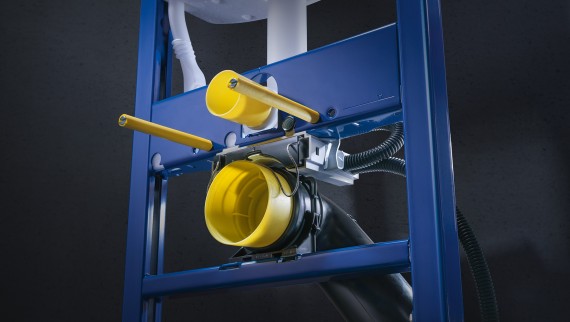
In-wall systems for wall-hung fixtures
Every Geberit concealed system for wall-hung toilets comes with built-in dual-flush capability. When paired with a dual-flush actuator, the Geberit system can reduce household water usage by thousands of gallons per year.

Sigma30 actuator plate with recycled plastic
The white actuator plate is made of 100% recyclable plastic material. The mounting frame for the actuator plate is made of 100% recycled ABS plastic.
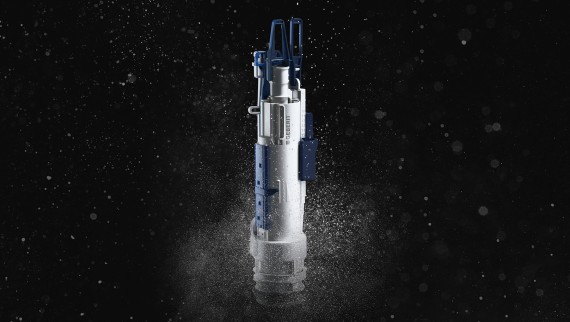
Water-saving 212 flush valve
The 212 flush valve makes an important contribution to saving water, because the toilet can be flushed with small quantities of water – from 1.28 gallons (4.8 liters) for a full flush and 0.8 gallons (3 liters) for partial flush. The valve is compatible with all Sigma and Omega concealed tanks.
Tips and tricks for being more sustainable in everyday life
Use less water
Tips for saving water
Reduce Water Consumption in the Bathroom
It is a good idea to use water sparingly. Reduce your water consumption in the bathroom noticeably with these six tips.

Avoid waste
Less waste in the bathroom
The things we use every day, like shampoo bottles and hygiene products, cause a lot of plastic waste. Significantly reduce this waste with some simple tricks.
